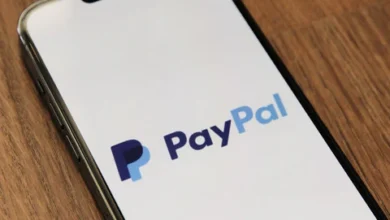
Top Ways to Make Money in 2023
As we journey through the year 2023, the ways to earn money are continually changing, presenting a wide range of possibilities for those aiming for financial advancement. Whether your goal is to enhance your current income stream or to pursue a completely new career journey, here are some of the most promising methods to generate income in 2023:

Freelancing and Remote Work:
The demand for freelance work and remote job opportunities continues to thrive and grow. Online platforms, such as Upwork, Fiverr, and Freelancer, serve as valuable resources by offering a diverse array of opportunities across various fields, including writing, graphic design, programming, and digital marketing. Remote work not only provides the flexibility to manage your schedule but also opens up the possibility of collaborating with clients and businesses from all corners of the world, expanding professional networks and experiences.
Stock Market and Investments:
Investing in stocks, bonds, or mutual funds is a potentially rewarding strategy for increasing your financial assets over time. The emergence of intuitive applications such as Robinhood and E*TRADE has made it easier than ever for individuals, even those without extensive experience, to begin investing with relatively small sums of money. However, it is crucial to perform comprehensive research or seek the guidance of a financial advisor to ensure you are making well-informed choices that align with your financial goals.
Cryptocurrency Trading:
Cryptocurrency remains a highly discussed and debated subject in the financial sector. Engaging in the trading of digital currencies like Bitcoin, Ethereum, and a variety of others can lead to significant profits; however, it also comes with its own set of risks and uncertainties. Platforms such as Coinbase and Binance offer users the opportunity to access and navigate the crypto market, yet it is essential for traders to consistently stay updated and well-informed regarding the latest market trends and regulatory changes that could impact their investments.
Online Courses and Coaching:
If you possess specialized knowledge or skills in a particular area, consider developing online courses or providing coaching services. Platforms such as Udemy and Teachable enable you to design, market, and sell courses on a wide range of topics, including personal development, technical skills, and more. Additionally, coaching sessions can be conducted through Zoom or other virtual platforms, allowing you to connect with clients remotely.
E-commerce and Dropshipping:
Launching an online store or utilizing dropshipping services can be a highly effective strategy for generating income. With platforms such as Shopify and WooCommerce, setting up an e-commerce site has become more accessible than ever. Dropshipping, in particular, offers the advantage of selling products without needing to hold any inventory, which significantly reduces the initial costs and financial risks associated with starting a business.
Content Creation and Monetization:
As social media and streaming platforms have gained immense popularity, content creation has emerged as a legitimate means of generating income. Platforms like YouTube, TikTok, and Instagram provide various monetization opportunities, including earning through ad revenue, securing sponsorship deals, and engaging in affiliate marketing. Establishing a robust online presence and actively interacting with your audience is crucial for achieving success in this field.
Real Estate Investments:
Investing in real estate continues to be a reliable approach for accumulating wealth over time. Various options are available, such as acquiring rental properties, engaging in house flipping, or investing in Real Estate Investment Trusts (REITs). Though it demands substantial financial resources and an understanding of the market, real estate investment has the potential to deliver a consistent income stream and significant long-term value growth.
Gig Economy Jobs:
The gig economy is experiencing significant growth, offering a range of opportunities in sectors such as ride-sharing, food delivery, and task-oriented services. Companies like Uber, DoorDash, and TaskRabbit provide individuals with the flexibility to tailor their work schedules to fit their personal needs, allowing them to earn an income on their own terms. This flexibility is particularly appealing to those seeking work-life balance or supplemental income.
Print-on-Demand Services:
Print-on-demand services offer the opportunity to design and sell personalized products such as t-shirts, mugs, and phone cases without the hassle of managing inventory. Platforms like Printful and Redbubble take care of the production and shipping processes, allowing you to concentrate solely on crafting distinctive and creative designs.
Participating in Online Surveys and Market Research:
Although it may not be the highest-earning opportunity, engaging in online surveys and participating in market research can serve as an additional source of income. Websites such as Swagbucks and Survey Junkie provide incentives and monetary compensation for individuals who are willing to share their views and insights on a range of different subjects.
As the year 2023 progresses, these methods provide tangible opportunities to increase and expand your wealth effectively. It’s crucial to carefully evaluate your individual skills, personal interests, and your willingness to take on risk, in order to select the most suitable approach for achieving your financial objectives. With commitment and the implementation of effective strategies, you can successfully maneuver through the constantly evolving economic environment and attain financial prosperity.





